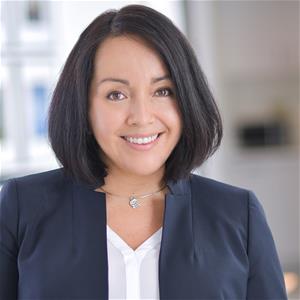
Dec 1, 2021 2021-12 Business Administration Faculty Research in Education
'Paradox brands' hold strong appeal for bicultural consumers
Bicultural consumers such as Asian Americans or Hispanic Americans are the fastest growing demographic in the U.S., and one of the challenges marketers face is how to build brands that resonate with consumers who have assimilated norms from different cultures and are able to code-switch between behaviors in response to social cues.
According to a new paper co-written by a team of Gies College of Business experts in consumer marketing, “paradox brands” – that is, brands that can straddle contradictory meanings or possess opposing characteristics – are more appealing to bicultural consumers than traditional singular-meaning brands.
 Because of their higher levels of cognitive flexibility through their multicultural milieu, bicultural consumers evaluate paradox brands more favorably and choose them more often over traditional brands that lack contradictions, said Maria A. Rodas, a professor of business administration at the Gies College of Business and a co-author of the research.
Because of their higher levels of cognitive flexibility through their multicultural milieu, bicultural consumers evaluate paradox brands more favorably and choose them more often over traditional brands that lack contradictions, said Maria A. Rodas, a professor of business administration at the Gies College of Business and a co-author of the research.
“Bicultural individuals constantly toggle back and forth from one culture to another, whether it’s switching languages or responding to different cultural stimuli,” she said. “They have this cognitive flexibility that other consumers might not have in that they’re constantly comparing and contrasting things from their respective cultures, and that makes brands that are contradictory more appealing to them. The net effect is that bicultural consumers become more strongly engaged with the paradox brand, resulting in more favorable evaluations.”
“Bicultural consumers are a huge opportunity for marketers because they’re the fastest growing demographic in the U.S., yet we know relatively little about what brand strategies work for them,” said Carlos Torelli, a professor of business administration, the James F. Towey Faculty Fellow at Illinois and a co-author of the paper. “Our research demonstrates that building a paradox brand can be a particularly successful approach to win over bicultural consumers.”
The researchers tested their hypothesis through seven studies, including a field study of consumer brand preferences and subsequent evaluations of the process responsible for those effects, providing evidence for the causal links between cultural background, cognitive flexibility and paradox brand evaluations.

Paradox brands were defined as brands whose identities incorporate seemingly inimical traits or contradictory meanings. Examples include the Janus-faced characteristics found in the “rugged-yet-sophisticated” brand personality of the automaker Land Rover or the opposing values found in the “traditional-but-trendy” brand of fashion company Burberry.
The studies show that bicultural consumers, with higher levels of cognitive flexibility, engage more with paradox brands, which leads to more favorable paradox brand evaluations compared with monocultural consumers.
“All of this is driven by the greater cognitive flexibility found among bicultural consumers,” Rodas said. “Paradox brands invite that kind of engagement due to opportunity for divergent thinking. And stronger brand engagement contributes to more favorable brand evaluations and choice. But the overall picture is that our conclusions go against one of marketing and advertising’s bedrock principles, which is that successful branding involves a single, clearly expressed and unambiguous claim about a brand’s position.”
The findings point to opportunities for brands and marketers to appeal to a rapidly growing segment of consumers, the researchers said. In the U.S. alone, about a third of the population are bicultural consumers, comprising about $4.1 trillion in buying power. It’s also the fastest growing segment of the U.S. population, accounting for 92% of total population growth from 2000 to 2014, according to the paper.
“Marketers are well aware of the opportunities that exist in developing brands that would appeal to bicultural consumers, and are responding with increased budgets and tailored marketing campaigns to target this group,” Rodas said.
Deborah Roedder John, of the Carlson School of Management at the University of Minnesota, is a co-author of the research.
The paper was published in the Journal of Consumer Research.
